Claire Mabey – 10 December, 2013
To anyone who once had a formidable piano teacher, Marco Fusinato's series takes the breath away. Sheet music is entirely transformed by lines drawn from every note into a central point. The music is fixed into one devastatingly mind-blowing note. It is visually transfixing - and for the mind, it is almost overwhelming trying to read the convergence. These images are among the strongest of the exhibition - distilling the very core of the language of sound into a concept that leads the idea of organizing music into the boundaries of the unimaginable and unmanageable.
Wellington
Vicky Browne, Philip Dadson, Robin Fox, Marco Fusinato, Michael Graeve, Brent Grayburn , David Haines, Joyce Hinterding, Eugene Hansen, Jenny Gillam, Dr Kron, Michael Morley, Kusum Normoyle, Thembi Soddell, Torben Tilly and Robin Watkins
Sound Full: Sound in Contemporary Australian and New Zealand Art
Curated by Caleb Kelly and Aaron Kreisler
19 October 2013 - 9 February 2014
This is an expansive exhibition of many parts. A dozen works by sixteen artists representing sound in contemporary Australian and New Zealand art; no mean feat.
Torben Tilly and Robin Watkins’s On Seeing Through Obstacles, Across Space and Around Corners (2008) is the element of the exhibition that has lasted the longest in the post-exhibition pondering. Ultra sonic speakers ‘meet inside your brain’ as the visitor host explained. It is the same technology used by corporations to get inside the minds of customers - you cannot escape the voices. A copy of Man, The Unknown by Alexis Carrell sits atop a skewed chair that looks as though it’s sinking into the floor - you couldn’t comfortably sit in it. Perhaps just like the discomfort a reader might feel when discovering Carrell’s thoughts on eugenics.
The overwhelming impression is this sort of clash of fascination and discomfort, sound, vision and setting being both absorbing and disturbing. We are the obstacles that the sound is getting through, and around every corner we have a new, not entirely enjoyable, experience.
Around the next corner is a black box: Thembi Soddell‘s Window (2008). My friend took the first turn inside - all I could see was the edge of his toes peeking out from behind the curtained front. He emerged 30 seconds later rubbing his ears, mildly distressed, saying it made him feel sick. I crawled in - you have to go backwards - and nestled inside, curtain closed. A storm, bats, waves, a natural disaster. But tucked away in the eye of it - an almost safe, observational perspective.
I enjoyed being tucked away with no visual distraction, with just the sounds, which were mine to interpret without any textual pointers. Afterward I read the guide which starts with a quote from Sylvia Plath’s The Bell Jar: ‘At first I wondered why the room felt so safe. Then I realized it was because there were no windows’. There is something curious about the idea that some feel safe, enclosed, shut away, blind to any external references - while others feel nothing but discomfort and the need to escape.
Outside, the wall is covered in images of green skulls, alarm clocks, and cuckoos. The diamond motif immediately said Hirst. Alarm clocks with birds reminiscent of cuckoo clocks are perched intimidatingly across the entire wall. For this exhibition, I tried not to read the guide until after I’d navigated my way around and made my own interpretations. Eugene Hansen, Jenny Gillam and Dr Kron‘s Future Calls the Dawn Contagion (2012) evoked the killer sound of the alarm clock, the dire reality of daily routine, the carving out of contemporary art by the movements of the art market, and mortality. The artists had, in fact, represented the 12 countries where bird flu related deaths had occurred. Each clock goes off at midday - which must increase the sense of panic and chaos.
Opposite this work is Marco Fusinato‘s Mass Black Implosion (2012). To anyone who once had a formidable piano teacher, this series takes the breath away. Sheet music is entirely transformed by lines drawn from every note into a central point. The music is fixed into one devastatingly mind-blowing note. It is visually transfixing - and for the mind, it is almost overwhelming trying to read the convergence. These images are among the strongest of the exhibition - distilling the very core of the language of sound into a concept that leads the idea of organizing music into the boundaries of the unimaginable and unmanageable.
Film becomes the core component of Sound Full from this point on. Technology doesn’t always represent the concept as adequately as we might wish. David Haines and Joyce Hinterding‘s Monocline: Black Boxes (2011-2012) is thwarted a little by a jerky relationship between the view and a technology designed to allow a self-guided tour through cell-like shapes on a wall-sized screen. But the experience is fruitful nevertheless. The intricate shapes and mechanism of navigation mean that you never quite feel you have covered all of the available territory. The pressure of being in a public place means you feel you can’t hog the game and curtail the time of the people waiting for you to finish. But this is a tantalizing element of the work - much like the coveted x-box in a family of curious gamers.
The highlight of the audio-visual work is Robin Fox’s Volta (2010). This is where sound and image are truly cohesive. Full of nostalgic blips and peeks, Volta feels like a language - the sounds and images are perfectly matched, timed and pitched - so that you get the sense of communication or of voice matched with gesture. It is a lively, energizing work that recalls early computer games, Len Lye films, concepts of organic versus mechanical, and the visual and sonic representations of energy (like a heart monitor).
Phil Dadson‘s work is lyrical. The viewer stands under a sonic cone and watches an upside-down journey through water and wooded landscapes. There is a sense of the adventure of exploring nature, which remains something of a mystery as the view is never entirely ‘right’. This work is more successful than The Sound of Plants and Music (Vicky Browne, 2012).
Here microphones made from twigs are nestled on a table among plants. Viewers are encouraged to sit at either end of the table and speak to the microphone, apparently conversing with nature. The comedy of this situation isn’t conveyed accessibly enough - or is perhaps too out of context in the relative seriousness of the exhibition - therefore an awkward interaction.
Sound Full is the sum of multiple components. The overwhelming feeling is one of tension between the mingled semiotics of sound and image and the strange realization that although sound is an essential, inextricable element of everyday life, it is not a major voice in art and something of a foreign presence in a gallery.
Claire Mabey
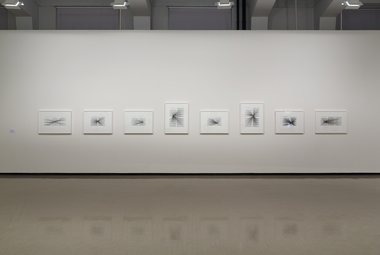
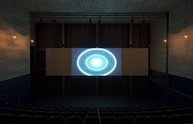
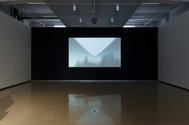


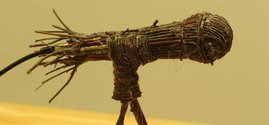
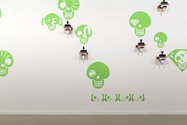
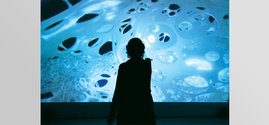
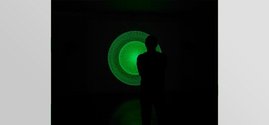

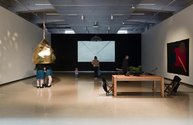
 Advertising in this column
Advertising in this column Two Rooms presents a program of residencies and projects
Two Rooms presents a program of residencies and projects

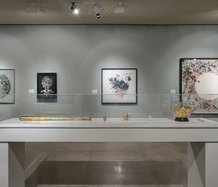
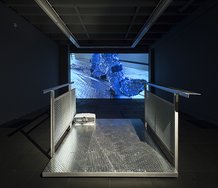
This Discussion has 0 comments.
Comment
Participate
Register to Participate.
Sign in
Sign in to an existing account.